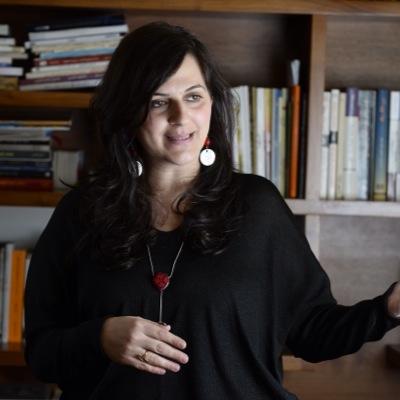The current battle taking place in occupied Jerusalem can be classified in the context of the occupation’s policy of masking the indigenous people’s ownership of this land and its landmarks. The land is the most important component of the indigenous people’s identity and the occupation has deliberately seized their land and identity, as well as denied their legal and historical ownership of it.
Jerusalem and Al-Aqsa have been critical political elements throughout history. The scene became more complicated since the construction of the Separation Wall, which added a different aspect to the conflict regarding the land’s ownership and sovereignty. This reflected on the restriction of Jerusalemites and their market which carries cultural and traditional meaning. It also reflected on the restrictions and crackdowns on the Old City and the services that the municipality tries to blackmail Jerusalemites with by means of the so-called security behaviour of Jerusalem residents.
The occupation reserves special treatment for the Jerusalemites given Jerusalem’s special status in the daily, political and social sense. It is the Palestinian city that is constantly on fire and which has clear contact between the Palestinians and occupying soldiers on a daily basis. The Palestinians’ concerns in Jerusalem are largely varied. The Jerusalem Intifada has a deep impact on the national situation and, despite the difficult conditions, the Jerusalemite youths have proven that all efforts and attempts to hamper and contain them will not deter them from their role in the popular struggle. They have even gone beyond the Palestinian factions in their individual resistance, convinced that sovereignty over Jerusalem belongs to the Jerusalemites and all the Palestinians.
Read: Israel removes intrusive ‘security’ measures, Al-Aqsa reopens
If we talk about the critical moments and phases, we must also talk about the importance of the Jerusalem and Al-Aqsa Intifada in 2000, which acted as a turning point in the Palestinian struggle and in the meaning of the national identity, compared to the civil identity. It also shed light on the political significance of citizenship.

A Palestinian child throws stones at an Israeli tank, much like the iconic image of Faris Odeh from October 2000, during the Second Intifada
This phase was distinguished by the fact that it was a popular and youth uprising that recorded historical heroism. This is because the Second Intifada established a new phase of the Palestinian consciousness in Palestine. This is a phase that expressed genuine national solidarity. As for the popular anger, it was truly a result of protesting a complete lifestyle and the rejection of Israel’s sovereignty that manifested in settlements, Judaisation and the storming of Al-Aqsa. Therefore, the scene of Jerusalemites and Palestinians in Palestine insisting that the sovereignty over Jerusalem will only be Palestinian was promising. The collective mobilisation at the time was a strong expression of clear demands and the imposition of challenges before the occupation. Today we are witnessing another political scene that reiterates, once again, that Jerusalem and Al-Aqsa are under Palestinian sovereignty and this cannot be compromised. This insistence and determination is reflected in the Jerusalemite mobilisation, which is well aware that the ongoing conflict is a conflict over historical ownership and sovereignty.
Therefore, the popular situation we are witnessing in Al-Aqsa is an expression of this awareness. Moreover, the positions expressed by the Islamic institutions regarding the mobilisation against the measures in Al-Aqsa expresses the presence of a strong and firm leadership with a clear compass pointed at challenging the occupation to fully assert that sovereignty will always belong to the Palestinians. The sit-ins surrounding Al-Aqsa, along with its concept of sovereignty and spreading a state of perseverance in the face of the occupation’s attempts to regain sovereignty and flex its muscles regarding Jerusalem and Al-Aqsa is motivation because the Jerusalemites are not concerned with the “security” measures used by Netanyahu inside Al-Aqsa as much as they are concerned with winning the battle of ownership and sovereignty.
Read more: ‘It’s a game to Israel, seizing and detaining Palestinians’
Since voting on the “Jerusalem as Israel’s capital” bill during its initial reading in the Knesset and the Knesset’s decision regarding nationalism and the “Jewishness” of the state, we have noticed a clear political escalation regarding Jerusalem and Al-Aqsa in particular, as well as an expression of a sovereignty crisis.
The issue and the challenge faced today goes beyond the “security” measures, extending to who sovereignty and control over Al-Aqsa belongs to. The occupation’s attempt to erase ownership and impose sovereignty, in the form of installing electronic gates, cameras, etc., is a procedural form of a political action. This is especially true as these orders were a result of a political decision, and we cannot interpret this in isolation from its political significance.
The question remains what the image of the struggle can be. We insist that one of the aspects of the conflict does not lie only in the confiscation of land, but also in the recognition of our historical ownership as indigenous people and the recognition of our sovereignty in our capacity as the indigenous people.
This article first appeared in Arabic in Arab48 on 26 July 2017.
The views expressed in this article belong to the author and do not necessarily reflect the editorial policy of Middle East Monitor.


![Director of Al Aqsa Mosque Sheikh Omar Al-Kiswani in Jerusalem on 27 July 2017 [Mostafa Alkharouf - Anadolu Agency]](https://i0.wp.com/www.middleeastmonitor.com/wp-content/uploads/2017/07/20170727_2_24972990_24497546.jpg?fit=1166%2C800&ssl=1)









